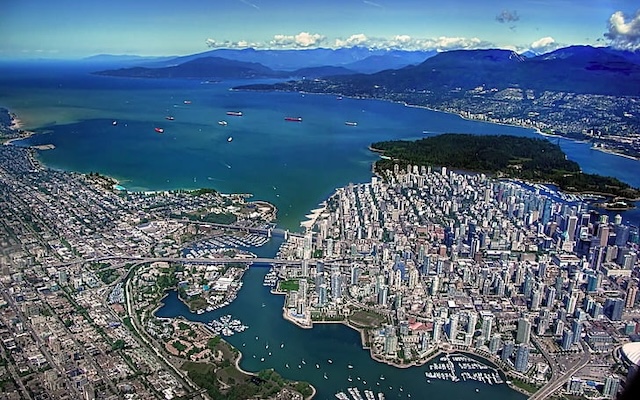The GPS company TomTom recently published its rankings of urban areas by the amount of congestion people face. Like many other congestion studies, the rankings estimate the amount of time the average motorist wastes during rush hour. But that may not be the best measure of mobility.
Is Vancouver the most congested urban area in the U.S. or Canada?
TomTom also listed the average speed of traffic in each city center and metro area, both during rush hours and over the course of a day (calculated using the number of minutes required to go six miles). The time wasted was calculated by measuring how much slower traffic was during rush hour compared with the rest of the day. Urban areas could reduce the hours of delay by increasing traffic speeds during rush hour. But they could also reduce the calculated hours of delay by reducing traffic speeds during non-rush-hour periods.
For example, TomTom estimates that motorists waste an average of 27 hours per year in both Hamilton, Ontario and Riverside, California. But average metropolitan speeds in Riverside are 41.5 miles per hour whereas in Hamilton they are only 28.3 miles per hour. During rush hours, Hamilton speeds fall to 25 mph while Riverside speeds remain at 35 mph. Based on the slower speeds, Hamiltonians waste a lot more time in traffic, but it doesn’t show up in the calculations of delay hours, which only show the difference between rush-hour and non-rush-hour speeds in each area.
Similarly, San Diego is rated as having more delay per commuter than Edmonton, Alberta. Yet average rush-hour speeds in San Diego of 34 mph are considerably higher than Edmonton’s average all-day speeds of 29 mph.
By almost any measure, Vancouver is the most congested urban area in Canada and the U.S. Average metro area speeds of 20 mph during rush hour and 23 mph over the entire day are the lowest and 53 hours of annual delay per commuter are the highest in the two countries. New York and Toronto have lower city center speeds than Vancouver, but most driving isn’t done in city centers.
After Vancouver, however, the ranking of metro area speeds is much different from the ranking of hours of delay. When measured in miles per hour, Canada has the eight slowest cities. When measured in hours of delay, however, it only has two in the top five and five in the top ten.
Out of 93 Canadian and U.S. urban areas in TomTom’s tally, more than half have average metro-area speeds of 35 mph or more and just shy of a quarter have average speeds of 40 mph or more. Dallas-Ft. Worth, the fifth-largest urban area in the U.S., and Phoenix, the eleventh largest, each have average speeds of 40 mph or more, which is particularly remarkable given these are also two of the fastest-growth urban areas on the continent.
Getting average speeds up to 40 mph and keeping them there should be the goal of urban transportation planners, not spending billions developing transit “alternatives to congestion” that average less than 20 mph (counting the time getting to and from transit stops). In the future, INRIX, the Texas Transportation Institute, and other groups monitoring congestion should report on average traffic speeds, not just delay hours that can deceptively cover up slow average speeds.









Cities are geographically limited to how many vehicles fit on city streets. Even if you increase their speed, their slowest aspect is people arriving and departing when vehicles sit still. Then again maybe designing our towns to be physically unwalkable even if the destination is 100 feet away.
https://pbs.twimg.com/media/FdqO2ToXwAEsGDB?format=jpg&name=large
News: Francis Scott key bridge in Baltimore collapsed 2 dead , many feared list after container ship collided with bridge pier. Rumors circulating
– DEI Hire
– cyber attack
Point is our infrastructure is terrible….. so we need better bridges built…in Ukraine
We should avoid building/mandating arterial routes also known as collectors and “stroads” that go 35-55 mph.
They fail to offer high speed and divide neighborhoods.
Road hierarchy is basic urban planning. Like to the point that Cities: Skylines players need to know how to do it to avoid congestion. The issue with stroads is that they try to provide both speed and connectivity, unlike road hierarchy which provides them on a negative relationship type beat (more connectivity=less speed; less connectivity=more speed).